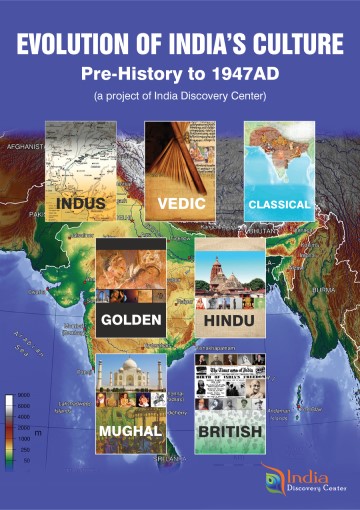Contribute
| India Vedic Period (2000BC-700BC) Art And Culture |
Krishnakali Dasgupta
02/11/2021
India Vedic Period (2000BC-700BC) Art and Culture – The Late Bronze Age period between 200o BC to 700BC displays ample archeological evidence of thriving tribal cultures all over mainland India, but material gathered from these sites are inadequate to paint their full socio-cultural picture. In contrast, a huge compendium of orally transmitted hymnal literature (involving fire sacrificial rituals) named Rig Veda, its three auxiliary Sama, Yajur and Atharva Vedas and the following Vedic inspired compositions of the period have survived. They speak volumes on Socio-cultural identity of the Vedic people. 1. A History of Ancient and Medieval India. Upinder Singh. 2018 impression. 2. The Wonder that was India. A.L. Basham. 3rd edition. 3. The Vedas. Roshan Dalal. 2014. 4. The Civilisation of India. R.C. Dutt.1995 5. Chalcolithic cultures of India. (Lecture). Dr. Anil Kumar. (Ancient Indian History and Archeology, Univ.of Lucknow. 6. History and Culture of the Indian People, Volume 01, The Vedic Age. Ed R.C. Majumdar. 9th Edition 7. A People’s History of India. I. Habib, V.K. Thakur. 8th Edition. 8. https://www.wikiwand.com/en/Vedic_period 9. https://www.swarganga.org/articles/details.php?id=7 10. https://www.harappa.com/content/wheels-indian-rock-art Ayas (Metal), Rathas(Chariot), Ashva (Horse), Shuna (plough), Sira (ploughman), Sita (heavenly furrow), Karmara, (blacksmith), Takshan (carpenter), Vyay (weaver) , Urna-sutra (Sheep-wool spun cloth), Tarpya (silk), Nivi and Vasa (lower garment), Adhivasa (upper garment), Drapi (shawl), Peshas (embroidered garment), Ushnisha(Turban), Hiranya (Gold), Shankha (conch-shell), Pravarta (earrings),Waan (lute), Venu (flute), Gargar (Harp), patah (cymbals), dundubhi (drums), Krishna ayas – (Iron), Peshaskari (embroiderer), Rajayatri (dyer). ----------------------------- Dr. Krishnakali Dasgupta leads the Art and Culture track in India Discovery Center's project on "Evolution of Indian Culture: Pre-history to 1947AD" More information and updates on the project are available at https://www.facebook.com/Evolution-of-Indian-Culture-An-IDC-Project-107749391111922 More information on India Discovery Center is available at https://www.indiadiscoverycenter.org (c) Copyright 2021 India Discovery Center, Inc. All rights reserved.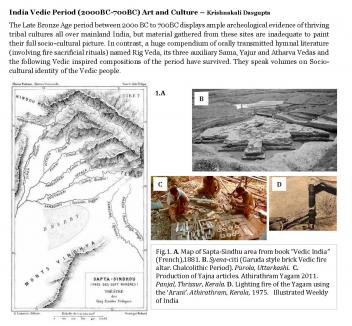
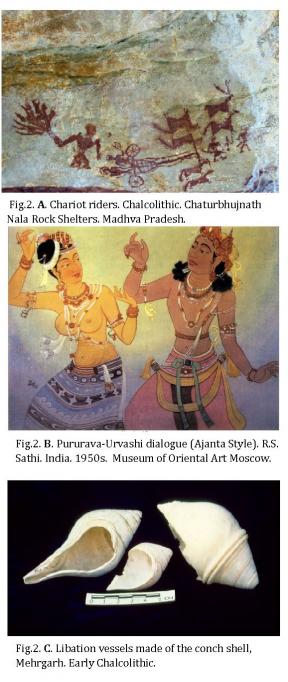
Women could learn the Vedas or become warriors during the Rig Vedic period, but not become a priest or host of a Yagna. The textile industry flourished on female expertise. Monogamy was encouraged and child marriage was not practiced.
The later Vedic literature (1000BC onwards), chronicles eastward movement of the Vedic tribes, implementation of iron for ploughs and arms, and massive expansion in crafts to include embroiderer, dyer, jeweler, leather craftsmen, mat and basket maker, potter, washerman, cook, boatman, charioteer, bowstring maker, horse attendant, elephant keeper, moneylender, astrologer etc.
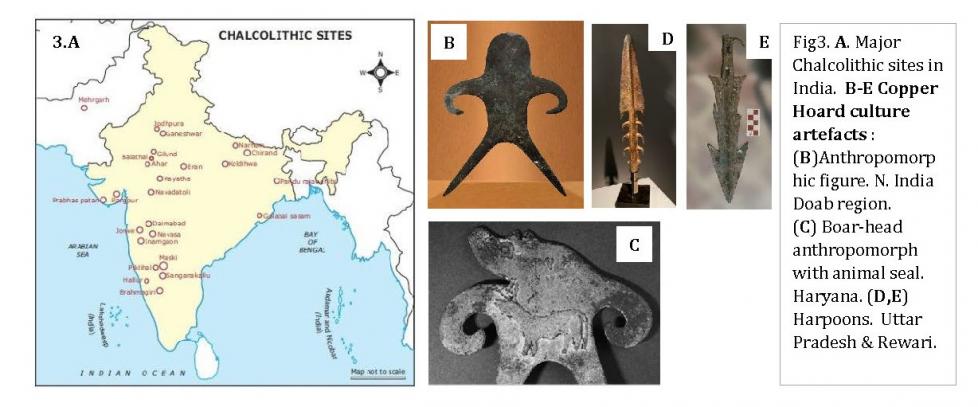
Following a mixed Ochre, Black and Red, and Buff pottery phase, a fine, smooth, fast wheel Grey ware painted with simple geometric designs (PGW) became pan-Indian. Eventually, advent of iron tools (daggers, spears, swords, knives, arrowheads, bangles, sickles, hoes, celts, hammers, ploughshares, trident etc) led to massive expansion of agriculture, ushering the era of river valley settlements that continue till today.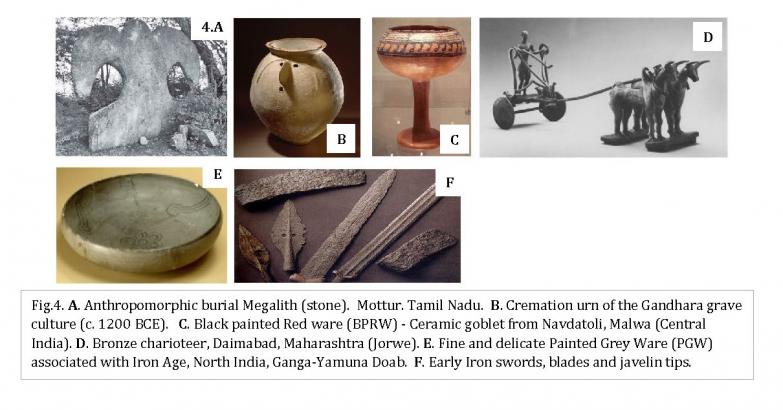
You may also access this article through our web-site http://www.lokvani.com/
